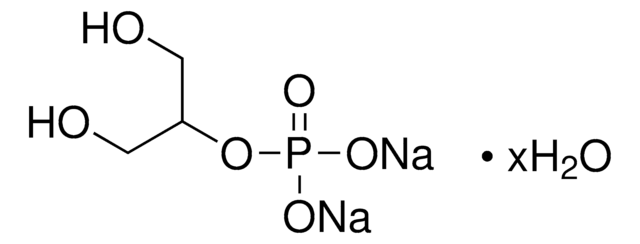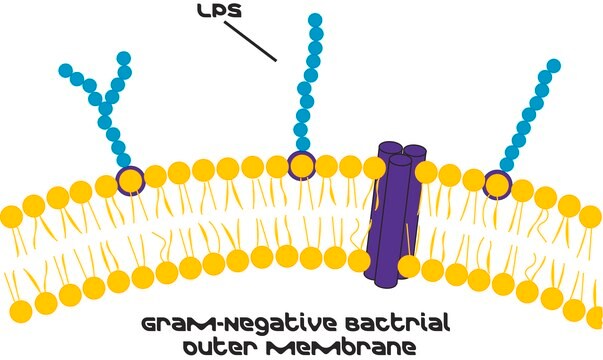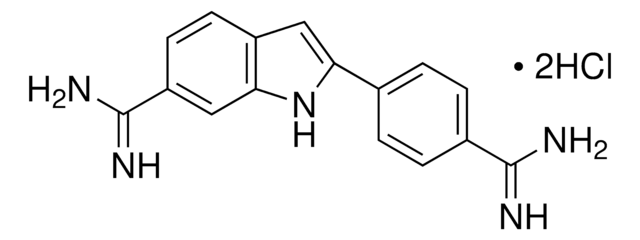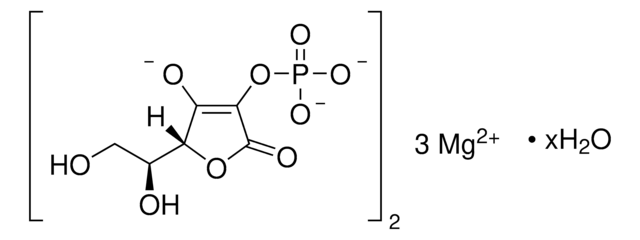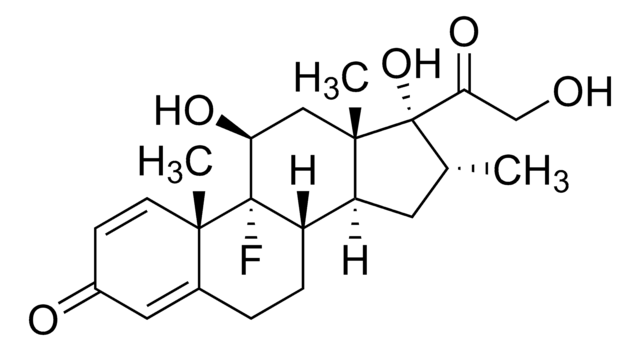추천 제품
재조합
expressed in baculovirus infected insect cells
분석
>85% (SDS-PAGE)
양식
buffered aqueous glycerol solution
특이 활성도
≥500 unit/mg solid
분자량
80 kDa by SDS-PAGE
calculated mol wt 76.9 kDa
UniProt 수납 번호
배송 상태
dry ice
저장 온도
−70°C
유전자 정보
human ... PRKCB(5579)
생화학적/생리학적 작용
PKCβII is involved in glucose signaling pathways.
Protein Kinase C (PKC) is a serine/threonine kinase that is activated intracellularly by signal transduction pathways that produce DAG from phosphatidylinositol diphosphate (PIP2) and phosphatidylcholine (PC) through the action of various activated phospholipases. Phorbol esters also stimulate PKC. At least 11 PKC isozymes have been identified that differ in primary structure, tissue distribution, subcellular localization, response to extracellular signals, and substrate specificity. The isozymes can be grouped into three subfamilies. Members of the first family require Ca2+ and phospholipid and include PKCα, βI, βII, and γ. Members of the second family are phospholipid-dependent but Ca2+-independent, and include PKCδ, ε, η, and θ. Members of the third family are not activated by either DAG or phorbol esters and include PKCξ, μ, and ι.
Phosphorylation appears to be an important mechanism of regulation of all PKCs. PKC plays a role in the regulation of cell transformation, growth, differentiation, ruffling, vesicle trafficking, apoptosis and gene expression.
Phosphorylation appears to be an important mechanism of regulation of all PKCs. PKC plays a role in the regulation of cell transformation, growth, differentiation, ruffling, vesicle trafficking, apoptosis and gene expression.
단위 정의
One unit will transfer 1 nmol of phosphate to histone H3 in 1 min at pH 7.4 at 30 °C.
물리적 형태
Solution in 20 mM HEPES, pH 7.4; 2 mM EDTA, 2 mM EGTA, 5 mM DTT, 100 mM NaCl, 0.05% Triton X-100, and 50% glycerol.
Storage Class Code
10 - Combustible liquids
WGK
WGK 1
Flash Point (°F)
Not applicable
Flash Point (°C)
Not applicable
개인 보호 장비
Eyeshields, Gloves, multi-purpose combination respirator cartridge (US)
Małgorzata Beręsewicz-Haller et al.
International journal of molecular sciences, 22(16) (2021-08-28)
Ischemic episodes are a leading cause of death worldwide with limited therapeutic interventions. The current study explored mitochondrial phosphate-activated glutaminase (GLS1) activity modulation by PKCβII through GC-MS untargeted metabolomics approach. Mitochondria were used to elucidate the endogenous resistance of hippocampal
Hai Huang et al.
Development (Cambridge, England), 138(12), 2477-2485 (2011-05-13)
Post-translational modification by the small ubiquitin-related modifier (SUMO) is important for a variety of cellular and developmental processes. However, the precise mechanism(s) that connects sumoylation to specific developmental signaling pathways remains relatively less clear. Here, we show that Smt3 knockdown
Sung Chul Lee et al.
Proceedings of the National Academy of Sciences of the United States of America, 104(40), 15959-15964 (2007-09-28)
Potassium (K(+)) is an essential nutrient for plant growth and development. Plants often adapt to low K(+) conditions by increasing their K(+) uptake capability. Recent studies have led to the identification of a calcium signaling pathway that enables plants to
Yong Xiang et al.
Plant physiology, 144(3), 1416-1428 (2007-05-31)
Plants respond to adverse environments by initiating a series of signaling processes that often involves diverse protein kinases, including calcineurin B-like protein-interacting protein kinases (CIPKs). In this study, putative CIPK genes (OsCIPK01-OsCIPK30) in the rice (Oryza sativa) genome were surveyed
Cecilia D'Angelo et al.
The Plant journal : for cell and molecular biology, 48(6), 857-872 (2006-11-10)
Intracellular release of calcium ions belongs to the earliest events in cellular stress perception. The molecular mechanisms integrating signals from different environmental cues and translating them into an optimized response are largely unknown. We report here the functional characterization of
문서
Glucose metabolism is regulated by the opposing actions of insulin and glucagon. Insulin is released from pancreatic ß cells in response to high blood glucose levels and regulates glucose metabolism through its actions on muscle, liver, and adipose tissue.
자사의 과학자팀은 생명 과학, 재료 과학, 화학 합성, 크로마토그래피, 분석 및 기타 많은 영역을 포함한 모든 과학 분야에 경험이 있습니다..
고객지원팀으로 연락바랍니다.